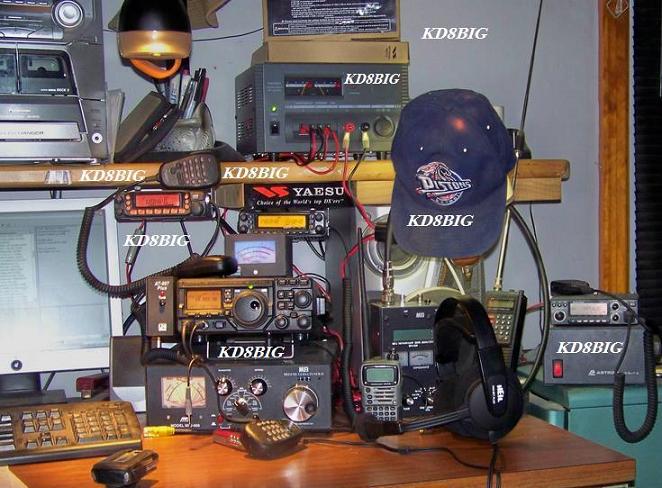Saturday, August 24, 2013
US & Canada Agree on New Border Spectrum Sharing Measure
In the way of fixed services, the FCC, the U.S. National Telecommunications and Information Administration and Industry Canada struck a sharing agreement governing 71 to 76, 81to 86 and 94.1 to 95 GHz. This is intended to facilitate deployment of fixed services within the border area. Such services include backhaul for mobile broadband networks, high-speed wireless local area networks and broadband Internet access over high bandwidth point-to-point links.
At 454.6625 to 454.9875 MHz and 459.6625 to 459.9875 MHz a Statement of Intent allows for creation of a nationwide digital system covering the sharing and coordination of spectrum for general aviation air-to-ground services. It provides for sharing of spectrum when operations are located within distances ranging from roughly 300 to 360 miles of the common border.
With regard to specialized mobile radio services at 896 to 901 and 935 to 940 MHz, the new arrangement governs the sharing and coordination of within roughly 60 miles of the common border and simplifies the criteria for permitting secondary users in the band. This is intended to enable more efficient use of the spectrum while protecting primary users. This particular agreement called Arrangement U may become part of a larger treaty or replacement agreement governing services operating above 30 MHz. The operational provisions of this arrangement will be applied on an interim basis pending further review. (RW, FCC, Industry Canada)
Friday, August 9, 2013
Louisiana Adopts Alert FM Statewide
According to the release, Louisiana’s Senator Mary Landrieu was an early supporter of the broadcast-based emergency alert systems. She is quoted as saying that with Alert FM, Louisiana has implemented a reliable method of distributing life-saving information to the citizens. She added that the dependability of broadcast transmissions can make the difference between life and death during an emergency.
As previously reported here on Newsline, Alert FM is an emergency notification system that delivers messages from state, local, and private sector officials to citizens, schools, businesses, and first responders using the Radio Data System or R-D-S sub- carrier of local FM radio stations. Messages are originated by designated officials and are then transported from a secure web-based portal to the data sub-carrier via GSS Net which is a secure satellite data delivery system. These alerts and messages are then received by FM stations and re-transmitted to Alert FM equipped receivers or to cell phones that have both active FM chips and properly installed software.
More about the Alert FM system is on line at alertfm.com. (Radio Weekly)
CHANCE OF STORMS
NOAA forecastesrs estimate a 65% chance of polar geomagnetic storms on August 10th when one and perhaps two CMEs are expected to hit Earth's magnetic field. The incoming clouds were propelled from the sun by a flurry of erupting magnetic filaments on Aug. 6-7. High-latitude sky watchers should be alert for auroras.
Source: SpaceWeather.com
Wednesday, August 7, 2013
MAGNETIC FIELD REVERSAL ON THE SUN:
It hasn't happened yet, but it's about to. Data from NASA-supported observatories show that the sun's global magnetic field will flip before the end of 2013. The reversal, which signals the arrival of Solar Maximum, will have ripple effects felt throughout the solar system. Get the full story and a video from Science@NASA.
HOW TO READ PROPAGATION NUMBERS
The A index [ LOW is GOOD ]
- 1 to 6 is BEST
- 7 to 9 is OK
- 11 or more is BAD
Represents the overall geomagnetic condition of the ionosphere ("Ap" if averaged from the Kp-Index) (an average of the eight 3-hour K-Indices) ('A' referring to amplitude) over a given 24 hour period, ranging (linearly) typically from 1-100 but theoretically up to 400.
A lower A-Index generally suggests better propagation on the 10, 12, 15, 17, & 20 Meter Bands; a low & steady Ap-Index generally suggest good propagation on the 30, 40, 60, 80, & 160 Meter Bands.
SFI index [ HIGH is GOOD ]
- 70 NOT GOOD
- 80 GOOD
- 90 BETTER
- 100+ BEST
The measure of total radio emissions from the sun at 10.7cm (2800 MHz), on a scale of 60 (no sunspots) to 300, generally corresponding to the sunspot level, but being too low in energy to cause ionization, not related to the ionization level of the Ionosphere.
Higher Solar Flux generally suggests better propagation on the 10, 12, 15, 17, & 20 Meter Bands; Solar Flux rarely affects the 30, 40, 60, 80, & 160 Meter Bands.
K index [ LOW is GOOD ]
- 0 or 1 is BEST
- 2 is OK
- 3 or more is BAD
- 5 is VERY VERY BAD
The overall geomagnetic condition of the ionosphere ("Kp" if averaged over the planet) over the past 3 hours, measured by 13 magnetometers between 46 & 63 degrees of latitude, and ranging quasi-logarithmically from 0-9. Designed to detect solar particle radiation by its magnetic effect. A higher K-index generally means worse HF conditions.
A lower K-Index generally suggests better propagation on the 10, 12, 15, 17, & 20 Meter Bands; a low & steady Kp-Index generally suggest good propagation on the 30, 40, 60, 80, & 160 Meter Bands.
Terms of Service
I am not responsible for any thing that happens to your mental health, computer and all personal property because you visited my site.
This site is a collection of some things sent to me by e-mail, obtained from other blogs and the internet. If there is a picture or quote that is copyrighted to you let me know and I will remove your item .
Thoughts expressed in my blog are just that . I give My Opinion on the many events, products and how too, reported by the media and other web-sites.
Do not use this blog site to obtain weather events or disasters information. What I post may not be correct. Always get information from the proper media, weather (NWS)(NOAA)
Pacific Tsunami Warning Center and USGS sites










